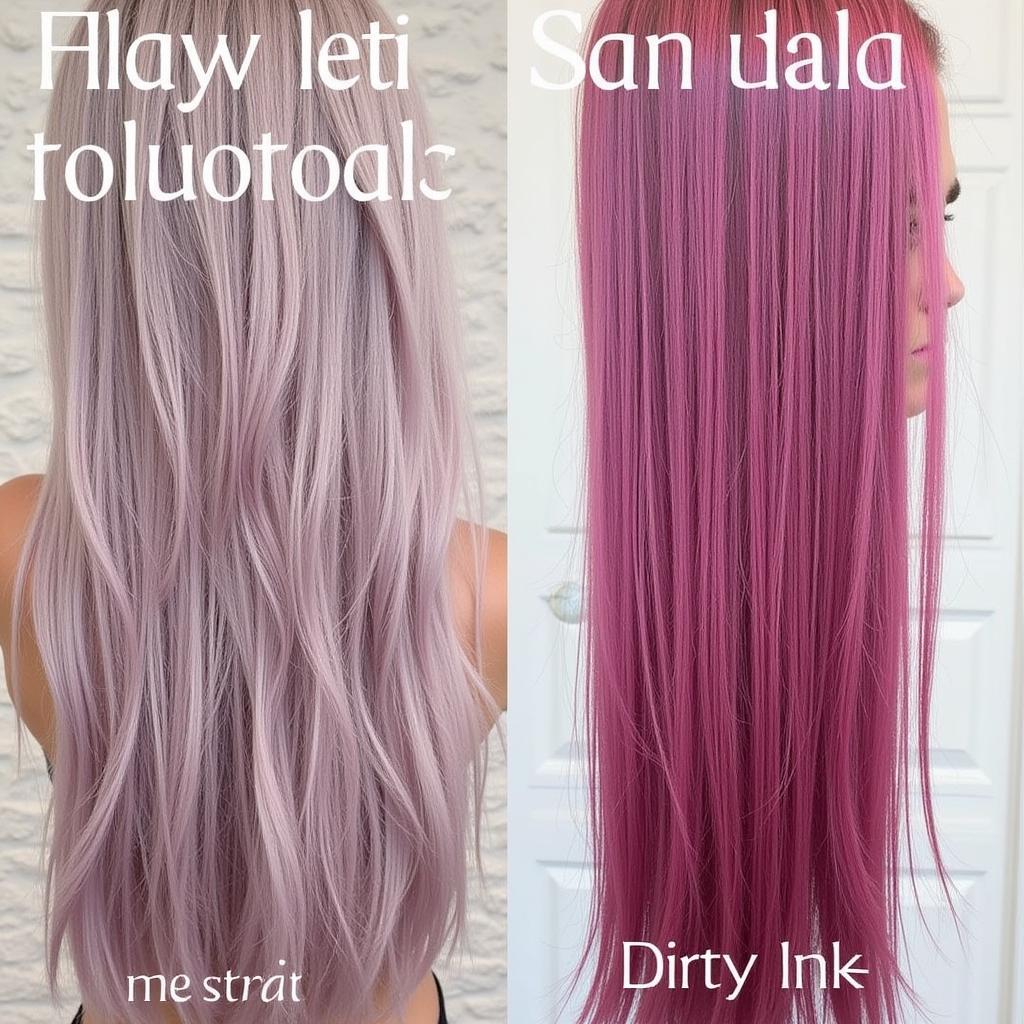Can you color clean hair? It’s a question many ponder as they embark on their hair coloring journey. While the age-old advice was often to color dirty hair, the reality is a bit more nuanced. Understanding your hair type, the type of color you’re using, and your desired results will help you determine the best approach for your specific situation.
After washing your hair, it loses some of its natural oils which are important for scalp protection. Applying dye straight after a shampoo could irritate sensitive scalps. Check out our guide on how to pick a rug color to add vibrancy to your home while you decide on your hair color.
Decoding the Clean Hair Debate
The Case for Coloring Clean Hair
Coloring clean hair allows for more even color distribution, especially with demi-permanent and semi-permanent dyes. These types of color rely on open hair cuticles for absorption, and freshly washed hair provides optimal access. Plus, clean hair allows your stylist (or you, if you’re DIY-ing) to accurately assess your natural hair color and texture, leading to more predictable results.
The Case for Coloring Dirty Hair
For those using permanent hair color, especially when lightening, a bit of natural oil can act as a protective barrier against irritation and damage. The oils can buffer the harsh chemicals, minimizing scalp sensitivity. However, excessively dirty hair can interfere with color penetration, leading to uneven results. So, “dirty” in this context means hair that hasn’t been washed for a day or two, not hair laden with product buildup.
 Coloring Clean vs. Dirty Hair
Coloring Clean vs. Dirty Hair
How to Prepare Your Hair for Coloring, Regardless of Cleanliness
Regardless of whether you choose to color clean or slightly dirty hair, proper preparation is key. If your hair is on the dirty side, avoid using heavy styling products in the days leading up to coloring. If it’s clean, consider applying a lightweight leave-in conditioner to help protect your strands. Always perform a patch test 48 hours before coloring to check for allergies. Do you know what the color of your car says about you? Color choices reflect personality, and the same can be said about hair color!
Tips for Coloring Clean Hair
- Use a clarifying shampoo a day or two before coloring to remove any product buildup.
- Avoid using conditioner on the day of coloring if you’re opting for clean hair.
- Apply a barrier cream around your hairline to prevent staining.
Tips for Coloring “Dirty” Hair
- Avoid heavy styling products for a few days before coloring.
- Brush your hair thoroughly to distribute natural oils and remove tangles.
- Focus the color application on your roots where the most oil buildup occurs.
Expert Insights
Annabelle Hues, Certified Colorist and Salon Owner, says, “The ‘dirty hair’ rule is outdated. With modern color formulations, clean hair is often preferable for optimal results. However, understanding your hair’s unique needs is paramount.”
 Hair Color Application Techniques
Hair Color Application Techniques
Can You Color Clean Hair: The Verdict
Ultimately, the answer to “can you color clean hair?” is a resounding yes, especially with modern color formulations. However, consider your hair type, the type of color you’re using, and your individual needs. For vibrant, even results, consulting with a professional colorist is always recommended. Looking to refresh your facial hair? Learn how to color beard hair for a coordinated look.
Conclusion
Whether you color clean or slightly dirty hair, the key is preparation and understanding your hair’s unique characteristics. By following these guidelines and consulting with a professional if needed, you can achieve the vibrant, healthy color you desire.
FAQ
- Is it better to color clean or dirty hair? It depends on the type of color and your hair type. Clean hair is generally preferable for demi-permanent and semi-permanent colors, while slightly dirty hair might offer some protection with permanent color, especially when lightening.
- How dirty should my hair be for coloring? If opting for “dirty” hair, aim for hair that hasn’t been washed for 1-2 days, not hair laden with product buildup.
- Can I use conditioner before coloring my hair? Generally, no. Conditioner can create a barrier that prevents color from penetrating the hair shaft effectively.
- How can I protect my scalp during coloring? Apply a barrier cream around your hairline and perform a patch test 48 hours before coloring.
- What should I do if I have an allergic reaction to hair color? Stop the application immediately and consult a doctor.
- How can I maintain my hair color after coloring? Use color-safe shampoo and conditioner, avoid excessive heat styling, and schedule regular touch-ups.
- Can I color my hair if it’s damaged? It’s best to consult with a professional colorist if your hair is damaged before coloring. Wondering is amika good for colored hair? Researching products specifically designed for colored hair is essential for maintaining vibrancy.
Common Scenarios
- Scenario 1: You have fine, oily hair and are using a demi-permanent color. Clean hair is recommended.
- Scenario 2: You have thick, dry hair and are lightening your hair with permanent color. Slightly dirty hair might offer some protection.
- Scenario 3: You have sensitive skin and are concerned about irritation. Perform a patch test and consider consulting a professional colorist. Want to try a temporary pop of color? Find out does color run powder wash out for a fun, commitment-free option.
Related Articles
- How to Choose the Right Hair Color for Your Skin Tone
- The Best Hair Color Trends for This Season
- Maintaining Vibrant Hair Color: Tips and Tricks
When you need support, please contact Phone Number: 0373298888, Email: [email protected] Or visit the address: 86 Cau Giay, Hanoi. We have a 24/7 customer service team.
